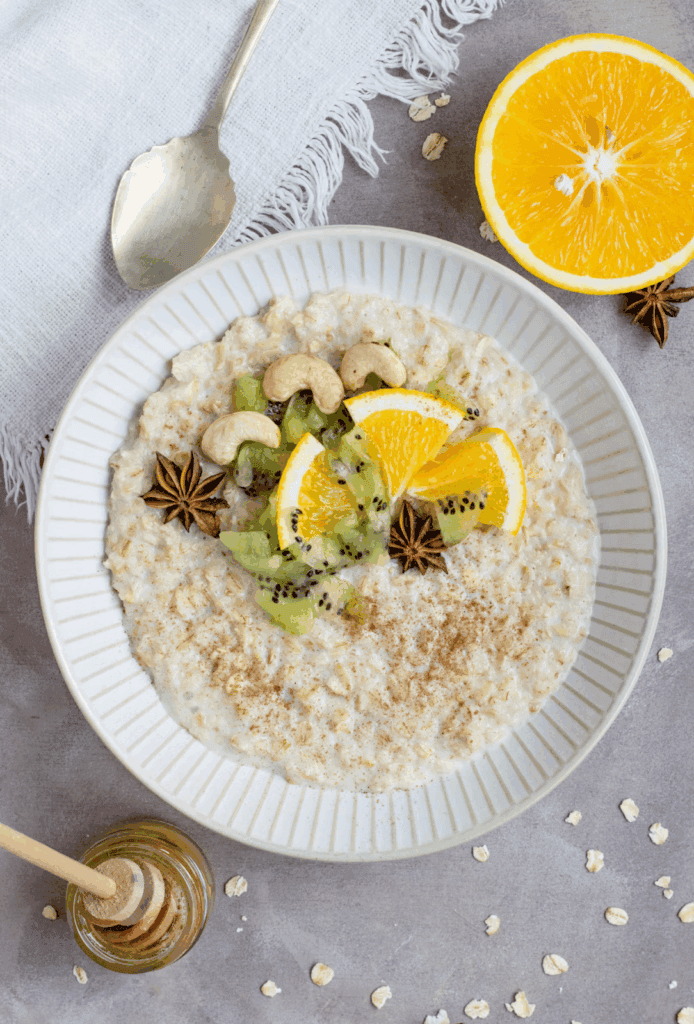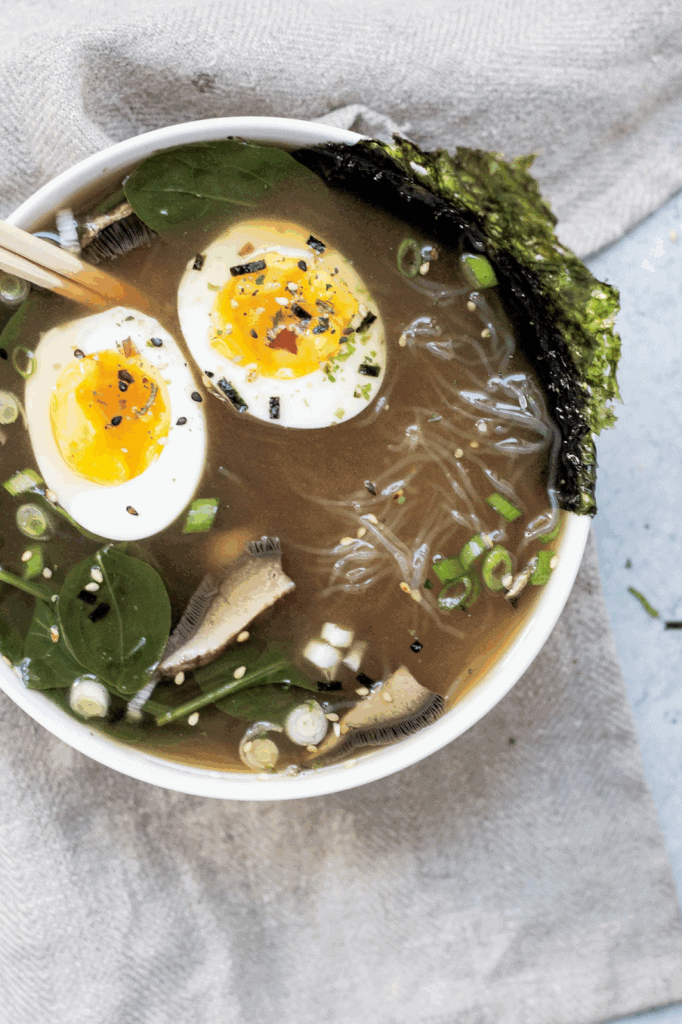We may earn money or products from the companies mentioned in this post. This means if you click on the link and purchase the item, I will receive a small commission at no extra cost to you ... you're just helping re-supply our family's travel fund.
Taking care of your gut isn’t just about avoiding bloating or the occasional stomach discomfort.
Your gut flora plays a powerful role in your health. It influences everything from digestion and energy levels to immunity and even your mood. When your gut is out of balance, your body feels it.
Did you know that nourishing your gut doesn’t have to be complicated or restrictive? With a few intentional food choices, you can start healing your gut flora naturally and enjoy all the benefits that come with a healthier, happier digestive system.
So, where do you start with your gut flora journey? Here are some of the most effective foods and drinks for restoring gut balance. This is your sign to build a menu your gut will love.

#1. Water
Hydration is one of the most overlooked pillars of gut health, yet it plays a critical role in keeping your digestive system running smoothly. Water helps break down food. It supports nutrient absorption and keeps things moving through your digestive tract.
When you don’t drink enough water, you can experience bloating, constipation and an overall unhappy gut environment.
The quality of water you consume matters too, especially as tap water can contain chemicals and contaminants. If you have concerns about the quality of your tap water, you may want to look for clear sources like purified spring water to support your gut and reduce exposure to unnecessary additives.
#2. Polyphenol-Rich Foods
Polyphenols are natural compounds found in plant-based foods. They are powerful antioxidants that can help reduce inflammation in the body. They encourage the growth of good bacteria in your digestive system. A healthier gut bacteria balance improves digestion, nutrient absorption, and overall immune function.
Where can you find polyphenols? They are in berries, green tea, nuts and dark chocolate. You can also find them in olive oil, red grapes, and spices like cloves and star anise.
#3. High-Fiber Whole Foods
Fiber is essential for a healthy gut, but a lot of people do not get nearly enough. Fiber is central to regulating bowel movements and supporting gut bacteria diversity. A fiber-rich diet will help reduce inflammation and balance blood sugar levels too.
There are 2 main types of fiber: Soluble and insoluble.
Soluble fibers absorb water and form a gel-like substance in the gut to slow digestion and nourish beneficial bacteria. These are in oats, beans, lentils, apples, and chia seeds.
Insoluble fibers add bulk to stool and help prevent constipation. These are in whole grain, quinoa, nuts, carrots, and broccoli.

#4. Fermented Foods
Fermented foods are naturally rich in probiotics, aka the good bacteria that help balance your gut microbiome. They support digestion, boost your immune system, and influence your mood too! So you definitely want to look into food that’s rich in probiotics to elevate your diet.
During the fermentation process, microorganisms appear. This is why probiotic food is usually labeled with “live cultures”. To make the most of it, you need to be careful when cooking. The benefits of probiotics disappear when exposed to high heat (never boil it!).
You can make your own or buy them from reputable sources.
#5. Prebiotics Foods
Are prebiotics and probiotics the same? Not quite. Probiotics introduce beneficial bacteria into the gut. Prebiotics feed these bacteria so they can grow and thrive. In other words, you need both to help your digestive system.
Prebiotics are a type of fiber that your body can’t digest, but that is useful to your gut bacteria. Where can you find prebiotics? Some of the most common prebiotic-rich foods are everyday favorites, including garlic, leeks, onions, bananas, apples, oats, artichokes, asparagus, and ground flaxseeds. They are easy to incorporate in your diet, and are probably already part of it.

#6. Bone Broth
Bone broth has soothing and nourishing qualities that support your gut health. It’s rich in ingredients like collagen, gelatin, and amino acid glutamine, which support the lining of your digestive tract. This is especially beneficial for those who frequently experience irritation, inflammation, and conditions such as leaky gut syndrome.
You can easily bring bone broth into your diet by using it as a base for soups and stews. You can also reduce it to prepare sauces.
For people with a plant-based lifestyle, there are vegan-friendly alternatives with ingredients like mushrooms, seaweed, miso and mineral-rich vegetables. Bear in mind that miso should not be boiled, otherwise you could lose its goodness!
#7. Leafy Greens
They’re one of the most nutrient-dense foods you can add to your plate, and they are central to gut health. Leafy greens are packed with fiber, vitamins, minerals, and antioxidants, which help feed the beneficial bacteria. Additionally, the natural compounds in leafy greens promote microbial diversity in the digestive tract.
To keep your leafy greens varied, you can add different types:
- Spinach
- Kale
- Collard green
- Arugula
- Swiss chard
- Etc.
#8. Ginger & Turmeric
These two spices have been used in traditional medicine to support the digestive system. They have anti-inflammatory and antioxidant properties, ideal to reduce inflammation and soothe the gut.
Ginger is great for nausea and calming an overactive stomach. It also helps food move smoothly through the tract. Turmeric, on the other hand, helps reduce inflammation throughout the body, including the gut.
Both are easy to add to your diet, especially if you frequently cook Indian food. Alternatively, ginger is a frequent ingredient in East Asian cooking. You can also use both of them as drinks, with ginger tea and turmeric latte.
#9. Omega-3 Foods
Omega-3 fatty acids are well-known for supporting heart and brain health. But they also help maintain a balanced gut. They reduce inflammation in the digestive system and support a diverse and resilient gut microbiome.
Fatty fish such as salmon, sardines, mackerel, and trout count among the best sources of omega-3s. For plant-based options, there are also delicious alternatives, including: Walnuts, flaxseeds, hemp seeds, and chia seeds, which you can sprinkle on your food.
Hopefully, this can give you plenty of good ideas on which ingredients to add to your cooking to improve your gut health naturally.
Leave a Reply